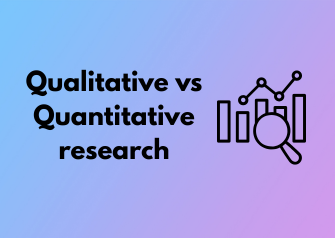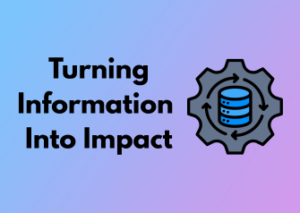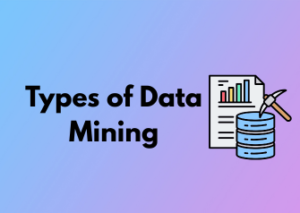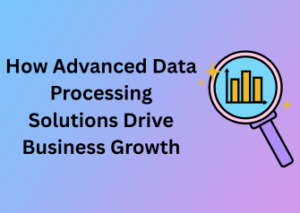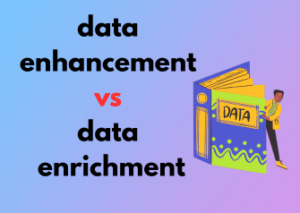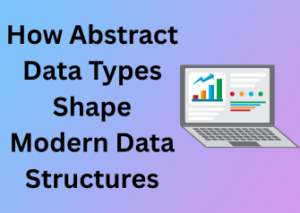Before jumping into the world of research, it’s essential to understand the building blocks that form its foundation. When we talk about research, two main approaches often come up: qualitative and quantitative. These two methods are like cousins—different personalities, but they’re both part of the same family, each tackling the big questions in their own unique way!
Let’s break it down into plain English. Qualitative research is all about diving deep into the richness of human experience. It focuses on understanding the “why” and “how” of things by exploring meanings, emotions, and perspectives. Think of it like having a conversation over coffee where you’re really trying to get to the heart of someone’s story. This kind of research is exploratory and open-ended—the goal isn’t to count or measure, but to understand.
On the other hand, quantitative research is centered on data you can count. Numbers, percentages, statistics—these are its bread and butter. If qualitative research is that inspiring heart-to-heart conversation, quantitative research is like running an experiment in a lab or analyzing a spreadsheet. It’s precise, structured, and aimed at answering questions like “how much,” “how often,” or “what percentage.”
It’s important to realize that neither approach is “better” than the other. Instead, they serve different purposes depending on your goals. If you’re looking to capture people’s unique experiences or uncover stories hidden behind layers of complexity, qualitative research is your go-to. But if you want concrete, measurable data to identify patterns or compare outcomes, quantitative fits the bill.

Key Features of Qualitative Research
- Exploratory nature: It’s about discovery and understanding, often leading to new questions rather than definitive answers.
- Flexibility: There’s no strict structure—you adapt methods as you uncover insights.
- Sample size: Typically smaller because the focus is on depth rather than breadth.
- Primary tools: Interviews, focus groups, and open-ended surveys.
Key Features of Quantitative Research
- Structured: It’s systematic, with well-defined procedures from beginning to end.
- Objective: It seeks measurable and repeatable data without subjective interpretations.
- Sample size: Often larger, aiming to capture trends or patterns across a broader population.
- Primary tools: Surveys with multiple-choice questions, experiments, and statistical analysis.
The bottom line? Whether you’re more drawn to rich narratives or hard data, understanding these two approaches is crucial. By grasping the core definitions and strengths of qualitative and quantitative research, you’ll lay a solid foundation for deciding which direction your research journey should take. Remember, great research starts with clarity and curiosity!
Data Types: Text vs Numbers
When diving into the world of research, one of the most critical distinctions to understand lies in the type of data you’ll work with. At a glance, research data falls into two major categories: text (qualitative) and numbers (quantitative). Let’s break this down together—what does this mean, and why does it matter so much?
What’s the Deal with Text?
Text-based data is a treasure trove of rich, detailed information. Whether you’re exploring interview transcripts, open-ended survey responses, or even social media comments, the core value lies in words. Text captures meaning, emotion, and often the context behind someone’s thoughts or experiences. It’s flexible, nuanced, and sometimes messy—but that’s part of its charm.
Let’s say you conducted interviews about how employees feel about workplace well-being. A respondent might say, “I feel supported when my manager checks in with me weekly.” This statement provides depth: we get a personal experience, a sense of emotion (support), and even a possible solution to improving well-being (frequent check-ins).
Pro tip: Working with text often requires interpretation. To make sense of qualitative data, researchers tend to look for patterns, themes, or recurring ideas that pop up across their sources. This process, known as coding, can help distill the chaos into something meaningful.
And What About Numbers?
Numbers, on the other hand, are the bread and butter of quantitative research. They are precise, standardized, and, importantly, measurable. Quantitative data lets you test hypotheses, identify trends, and quantify relationships between variables.
Imagine you’re conducting a survey about workplace well-being, and you ask respondents to rate their satisfaction on a scale of 1 to 10. The responses are straightforward: “8,” “6,” “7,” and so on. These numbers can provide a clear, high-level snapshot of the group’s collective satisfaction.
Quick fact: Numbers are powerful because they allow for statistical analysis. For instance, you can calculate the average satisfaction score or compare scores between different workplace teams. These methods bring structure and objectivity to your findings.
Key Differences: A Side-by-Side Look
To help you remember the distinctions, here’s a quick comparison of text and numerical data:
- Text: Rich, descriptive, and full of context. It’s excellent for exploring the “why” behind behaviors.
- Numbers: Concise, standardized, and ideal for measuring the “what” in a precise manner.
Neither is better or worse than the other—they simply answer different kinds of questions.
Blending Both Worlds
Here’s a little insider tip for achieving deeper insights: you don’t have to choose between text and numbers. In fact, combining the two can give you the best of both worlds. It’s called mixed-methods research, and it’s a growing favorite for tackling complex questions.
For example, imagine you run a survey with both scaled (quantitative) and open-ended (qualitative) questions. You might find out 75% of employees rate their workplace satisfaction highly—but through the open-ended responses, you also uncover why: flexible hours, opportunities for growth, and strong leadership.

Analysis Methods: Interpreting Feelings vs Counting Trends
When it comes to research, the ways we analyze data depend heavily on whether we’re leaning towards a qualitative or quantitative approach. These two worlds couldn’t be more different! Qualitative research looks for insights hidden in feelings, stories, and unique human experiences, while quantitative research crunches numbers to uncover patterns and trends. So, let’s dive deeper: how do these methods differ, and when might you use one over the other?
Interpreting Feelings: The Art of Qualitative Analysis
At its core, qualitative analysis is about understanding the “why” behind human behaviors and emotions. This type of research thrives on open-ended questions, personal interviews, focus groups, and even observations. Here, you’re looking to uncover the meaning behind raw data.
One common way to analyze qualitative data is thematic analysis. This involves identifying patterns or recurring ideas in responses. For example, if you’re conducting interviews about customer satisfaction, you might notice recurring themes like “friendly service” or “long wait times.” These themes give you a deeper understanding of a group’s shared experiences.
But qualitative analysis isn’t just about spotting trends—it’s about interpreting nuances. Imagine reading someone’s diary (with permission, of course!). You’re not just looking at the words; you’re considering tone, context, and even what’s left unsaid. The goal is to pull meaningful insights that resonate on a human level.
A big challenge in qualitative analysis, though, is its subjectivity. One researcher’s interpretation of a participant’s response might differ from another’s. That’s why this method requires skilled analysts who can bring consistency and reliability to their interpretations without losing the richness of the data.
Counting Trends: The Precision of Quantitative Analysis
On the flipside, quantitative analysis is all about the “what”, the measurable and countable data that gives you numbers to analyze. Whether it’s survey results, sales figures, or website traffic, this method thrives on structured datasets. If qualitative analysis feels like art, quantitative analysis is pure science.
One of the most common approaches here is statistical analysis. From calculating averages to spotting correlations, tools like regression analysis or hypothesis testing help you distill massive amounts of data into actionable insights. For instance, you might survey 1,000 people about their eating habits and discover that 60% prefer plant-based diets. This gives you a clear, objective trend.
Quantitative data analysis also benefits from repetition. It’s highly replicable, meaning another researcher conducting the same study under similar conditions could likely draw the same conclusions. Unlike qualitative analysis, where interpretations might vary, detailed numbers tell a consistent story.
But keep in mind, quantitative research misses the finer details. Let’s say 30% of respondents give the same negative ranking in a survey— at first glance, it tells you there’s a problem. However, without qualitative research, you might not know why those people feel that way.
Balancing the Scales: When to Use Each Method
The beauty of qualitative and quantitative research is that they complement one another. Think of qualitative analysis as the heartfelt emotional director in a movie and quantitative analysis as the budget-conscious producer. Without one or the other, something feels incomplete.
- Want to explore a new topic or understand people’s emotions in-depth? Go with qualitative analysis to gather rich, textured insights.
- Need hard numbers or trends to back up your decisions? Lean on quantitative methods for precision and clarity.
In some cases, it’s even better to combine both for a comprehensive approach. For example, start with qualitative interviews to explore customer needs, then use quantitative surveys to validate those findings on a larger scale.
The Purpose Divide: Why and How Questions
When it comes to research, purpose is everything. Why are you doing this? What do you want to figure out? If you’re standing at the crossroads of qualitative and quantitative research, the answers to these questions are your compass. The primary difference between these two approaches lies in the type of questions they aim to answer: the “why” versus the “how much.”
Start with the “Why”: Qualitative Research as Your Guide
Let’s imagine you’re diving into a study about why consumers prefer one coffee chain over another. Qualitative research shines here because it explores those deep, often intangible reasons behind human behaviors, thoughts, and emotions. The “why” questions are all about getting inside people’s heads. You want to figure out:
- Why do people love the cozy vibe at Coffee House A?
- What emotions are associated with Brand X’s advertising?
- Why does social media discussion lean positive for one chain and negative for another?
The purpose here isn’t to count or measure but to understand motivations, experiences, and perceptions. Think of it as sitting down for a heart-to-heart with your audience to uncover the personal stories behind their choices.
Researchers typically use interviews, focus groups, or ethnographic studies to uncover these nuances. It’s like detective work but with empathy as your lens—perfect for unraveling emotions or cultural phenomena.
Zooming Out with “How”: Quantitative Research in Action
On the flip side, quantitative research takes on the “how much,” “how often,” or “how many” questions. Say you now know that people flock to Coffee House A because they feel it’s more inviting. The next step? Finding measurable proof. That’s where the numbers come in. Quantitative research gives you concrete data that you can scale and analyze:
- How many people feel that Coffee House A is warmer than Coffee House B?
- What’s the percentage of customers who prefer one brand based on price?
- How often do customers visit Coffee House A compared to its competitors?
The goal here is to quantify trends and draw conclusions based on statistical analysis. This type of research usually relies on surveys, experiments, or analyzing existing datasets. It’s less about emotional stories and more about hard facts that can guide strategy or decision-making.
The Key in Research Design: Matching Purpose to Method
Here’s the trick: your purpose dictates the method. If you’re trying to uncover the root cause of a problem or deeply understand a phenomenon, qualitative is the way to go. If you’re looking to validate assumptions with measurable evidence, quantitative is your best friend. However, don’t box yourself in—there’s beauty in mixing methods. For example:
- Start with qualitative: Understand why people are behaving a certain way or making specific choices.
- Back it up with quantitative: Verify if those initial findings hold true across a larger group.
By marrying “why” and “how” approaches, you can harness the best of both worlds for a balanced and insightful research strategy.
Tools of the Trade: Common Techniques and Software
When it comes to conducting effective research, having the right tools in your toolbox can make all the difference. Whether you’re leaning towards qualitative methods or diving into the world of numbers with quantitative techniques, using the correct tools and software ensures you’re working smarter, not harder. Let’s explore some of the key techniques and user-friendly software options that researchers rely on. Don’t worry — we’ll keep it simple and approachable!
Qualitative Research Tools
Ah, qualitative research! This is where the focus is all about exploring experiences, emotions, and deeper meanings. Here are some popular methods and tools often employed in this field:
- Interviews: One-on-one interviews are a cornerstone of qualitative research. Tools like Zoom or Microsoft Teams are fantastic for conducting virtual conversations, while transcription software like Otter.ai or Rev can save hours of note-taking by converting your spoken words to text.
- Focus Groups: Focus group discussions are a goldmine of insight. Platforms like FocusVision help organize and facilitate these group conversations. If you’re working with in-person groups, recording your sessions and using the right transcription service is vital.
- Thematic Analysis: This technique involves categorizing data into themes or codes. Tools like NVivo or Atlas.ti help researchers comb through interview transcripts or observational notes to identify patterns and key themes.
- Observation: Ethnography-style fieldwork uses tools like Evernote for recording observations or apps designed for journaling and organizing notes during live sessions.
Quantitative Research Tools
When numbers and statistical insights are your best friends, quantitative research tools come to the rescue. These tools are designed to work with large datasets and uncover trends, relationships, and numerical insights.
- Surveys: Platforms like Google Forms, SurveyMonkey, and Qualtrics are go-to choices for creating surveys, collecting responses, and analyzing results.
- Statistical Software: Analyzing data is a breeze with tools like SPSS, R, or Python. These programs are highly powerful for running statistical tests, creating visualizations, and processing massive datasets.
- Data Visualization: Communicating your findings visually is critical. Software like Tableau or Power BI allows you to transform boring spreadsheets into engaging charts and dashboards.
- Data Collection Tools: For behavioral or observational studies, tools like Excel or Google Sheets are simple yet effective for documenting counts, measurements, or trends.
Blended Approaches
Not every research study fits neatly into the “qualitative” or “quantitative” box. Sometimes, combining elements of both is the best way forward. Tools like MAXQDA are perfect for mixed-method studies, helping you to analyze numerical data alongside qualitative insights in one unified platform!
Choosing the Right Tool
The best tool for the job depends on your research focus. Are you diving deep into personal experiences? Then software designed for thematic analysis like NVivo may be your best bet. If you’re crunching large numbers of survey results, tools like SPSS or Python can be a lifesaver.
And of course, don’t overlook ease of use. A sophisticated program is great, but if it requires a PhD just to open it, it might bog down your research. Choose tools that match your comfort level, or be ready to invest time in tutorials and practice. Speaking of which — always check out free trials before committing to high-cost software!
Practical Applications: Choosing the Right Approach for Your Problem
So, you’re staring at a new research project or perhaps wrangling with an unresolved question that’s keeping you up at night. Or maybe you’re just curious about when to use qualitative research versus its quantitative counterpart. Either way, you’re in the right place! Let’s chat about the practical ways to choose between these two approaches in research, turning your problem into actionable insights.
Understand Your Research Goal
First things first, ask yourself: What exactly am I hoping to gain from this research? Are you trying to understand the deeper motivations, behaviors, or thought patterns of a group of people? Or are you attempting to measure specific metrics, percentages, or trends across a population?
Here’s the golden rule:
- Go qualitative when you want to explore the “why” — think opinions, insights, and stories.
- Go quantitative when your goal is to measure the “what” — numbers, statistics, or patterns.
For example, if you’re launching a new product and want to know what people think about it, qualitative research through interviews or focus groups might be your winner. But if you’re interested in pinpointing the percentage of customers who prefer the red version over the blue one? Quantitative surveys will be your best friend.
Consider the Scope and Scale of Your Problem
Another major factor is size. Are you working with a small, specific group of people, or is your audience broad and diverse? Qualitative research typically deep-dives into smaller sample sizes, allowing you to capture rich, detailed insights directly from participants. It’s intimate, nuanced, and perfect for when you need in-depth input.
On the flip side, quantitative research shines when you’re working with larger populations. Let’s say you’re gathering feedback from thousands of respondents, aiming for generalizable trends — this is where quantitative wins because its strength lies in numbers.
Time and Resources Matter
Let’s be realistic: time and budget constraints also play a role in selecting your approach. Qualitative research often requires significant time investments for conducting interviews, transcribing, and analyzing subjective data. Quantitative methods may be faster to execute, especially with the use of surveys or pre-existing datasets, but interpreting complex numerical data can also call for advanced statistical tools and expertise.
If you’re low on time but still need clear results, short quantitative surveys can often give you a quick snapshot of your audience. But if you’ve got time to spare and want rich depth, qualitative is well worth the investment!
Think About Your Stakeholders
Who are the people relying on your research findings, and what kind of data will convince them? Executive teams often love hard numbers that drive decisions, which makes quantitative findings incredibly appealing. However, if decision-makers are concerned about customer emotions or perceptions behind those numbers, qualitative insights become extremely valuable.
Better yet, consider combining both approaches for a powerful one-two punch of actionable data and meaningful context. It’s the ultimate crowd-pleaser!
Questions to Ask Before Starting Your Research
Hello, research enthusiast! Embarking on a research journey can feel thrilling and a little overwhelming at the same time. Asking the right questions before you dive in can make all the difference. Think of it as building a strong foundation before creating something remarkable. Let’s break it down in an easy and approachable way so you can hit the ground running with confidence.
1. What is the Goal of My Research?
First and foremost, ask yourself about the purpose behind your research. Are you trying to understand why people behave a certain way? That leans more toward qualitative research. Or, do you need numbers and patterns to track trends over time? Then, quantitative approaches might be your best friend.
Getting crystal clear on whether your aim is to explore deeper meanings or measure data is key. Without this clarity, you risk veering off track—or worse, spending hours collecting data that doesn’t serve your end goal!
2. Who is My Target Audience?
Not all research focuses on the same group of people or phenomena, so defining your target audience is critical. Are you studying a specific community? Customers of a certain age group? Or perhaps students attending a particular grade level? By narrowing your scope, you’ll know where to focus your energy while avoiding unnecessary detours.
Remember, qualitative research often digs into smaller, specific groups to uncover rich, subjective insights. On the other hand, quantitative research might target broader populations to ensure statistically valid results. This question helps in choosing the right path—so don’t skip it!
3. What Resources Do I Have?
Let’s face it—time, money, and tools are your research fuel. Think about the resources at your disposal. How much time can you dedicate to collecting and analyzing data? Do you have access to tools like interview guides for qualitative research or statistical software for quantitative analysis?
If resources are limited, mix-and-match approaches can work wonders, but you need to plan carefully. For instance, a quick survey for quantitative insights could complement a few in-depth interviews on the qualitative side.
4. What Ethical Considerations Are Involved?
Ethics might not be the first thing that pops into your mind, but it’s crucial. How will you ensure participant consent? How will you protect their anonymity? These questions apply irrespective of whether you’re dealing with numbers or narratives.
For example, asking someone to share personal stories as part of qualitative research requires establishing trust and handling their input with care. Similarly, collecting quantitative data responsibly ensures that respondents feel secure and respected.
5. How Will I Use the Results?
Finally, think about the bigger picture: how will this research benefit your larger goals? Whether you’re improving customer experiences, contributing to academic knowledge, or launching a product, your endgame will dictate the methods you use and how you present the results.
If the results need to convince stakeholders, quantitative data (like charts and stats) might prove more persuasive. Conversely, if the objective is to uncover personal stories that inform strategic decisions, qualitative findings could have more power.

